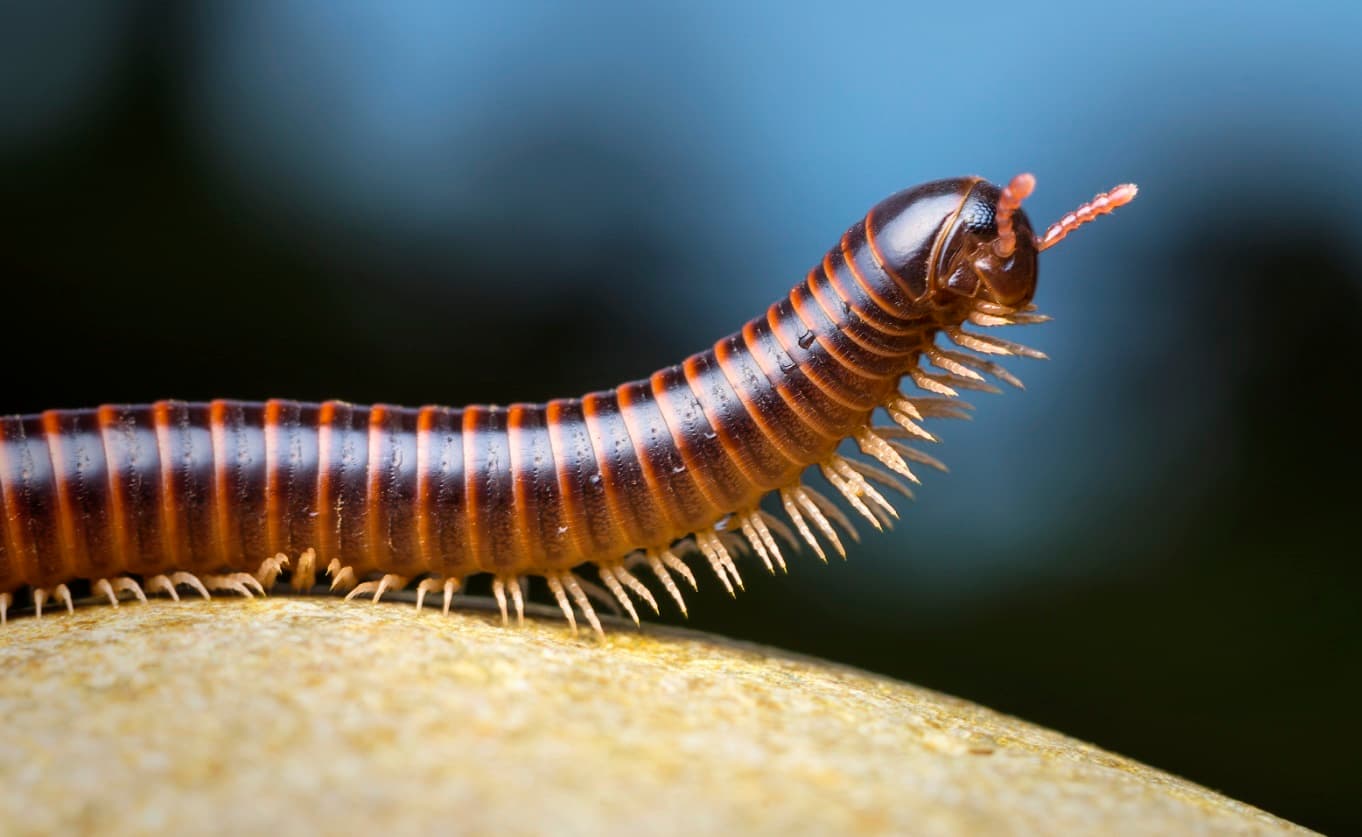Millipede
Diplopoda
Occasional InvadersLong cylindrical arthropod with many body segments, each with two pairs of legs. Dark brown to black, 1/2 to 1-1/2 inches. Slow moving. Feeds on decaying organic matter. Invades buildings during migrations. Harmless but releases defensive secretion.

Control Methods
Recommended methods for controlling this pest
| Method | Type | Effectiveness | Requirements |
|---|---|---|---|
| Door Sweep Installation | Mechanical | None | |
| Perimeter Insecticide Spray | Chemical | Required | |
| Non-Repellent Residual Spray | Chemical | Required | |
| Granular Perimeter Barrier | Chemical | Required | |
| Power Spray Application | Chemical | Required | |
| Foundation Perimeter Treatment | Chemical | Required | |
| Landscape Vegetation Management | Cultural | None | |
| Threshold and Sweep Inspection and Repair | Mechanical | None | |
| Expansion Joint Sealing | Mechanical | None | |
| Drainage Correction Recommendations | Cultural | None | |
| Mulch Treatment | Chemical | Required | |
| Crawl Space Treatment | Chemical | Required | |
| Crawl Space Vapor Barrier Installation | Mechanical | None | |
| Habitat Modification for Moisture Pests | Cultural | None |
Common Harborage Locations
Where to find this pest during inspections
| Location | Why Found There | Priority |
|---|---|---|
| Basements | High humidity, cooler temperatures, stored items, potential for flooding, entry point from outside. | Critical |
| Crawl Spaces | Direct earth contact, very high humidity, minimal disturbance, abundant hiding spots, poor ventilation. | Critical |
| Mulch & Landscape Beds | Moisture retention, organic material, cover from predators, bridge to structure. | High |
| Dense Vegetation Against Building | Moisture retention, bridge to structure, protection from predators, food sources. | Medium |
| Leaf Piles | Moisture retention, protection from weather, food source through decomposition. | Medium |
| Door Thresholds | Common entry point, gaps under doors, light attraction, temperature differential. | High |
Important Disclaimer: The information provided in this knowledge base is for educational and reference purposes only. Pest management professionals should always consult current product labels, Safety Data Sheets (SDS), manufacturer instructions, and applicable local, state, and federal regulations as the definitive source of truth. Product formulations, application methods, safety requirements, and regulations may change over time. This information may be out of date and should not replace professional judgment, proper training, or required licensing and certifications.